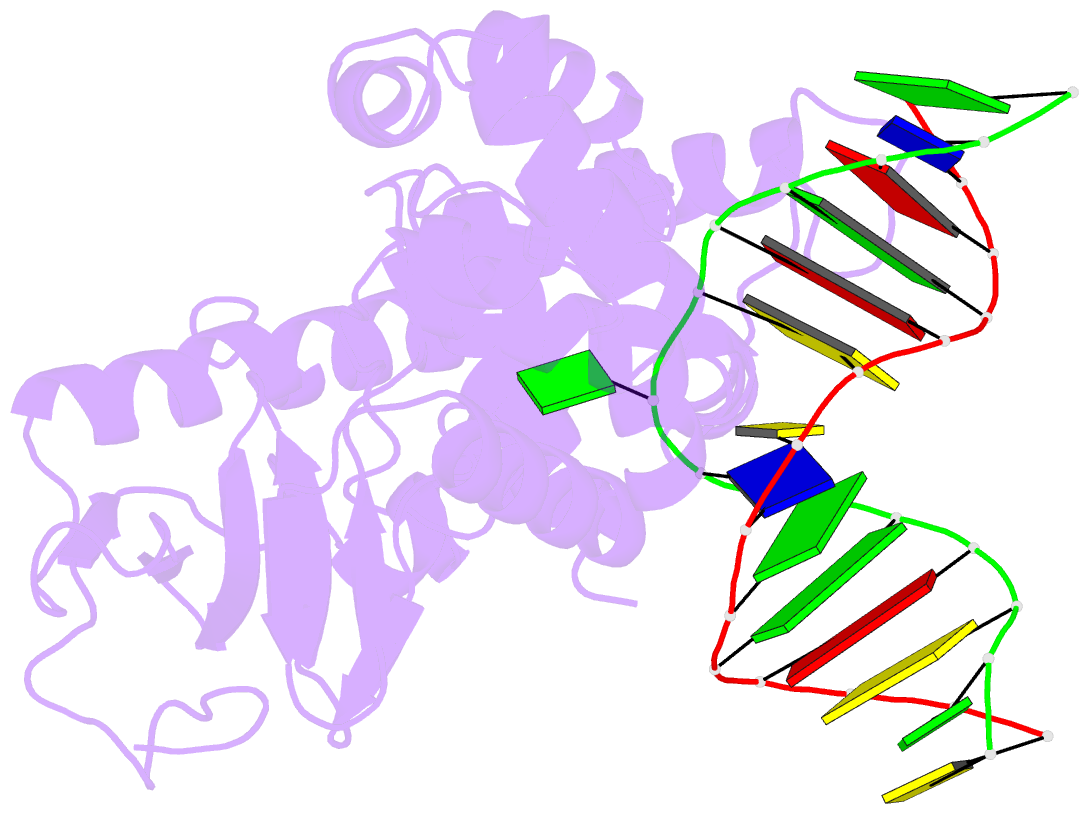Summary information and primary citation
- PDB-id
- 2xhi; SNAP-derived features in text and JSON formats;
DNAproDB
- Class
- lyase-DNA
- Method
- X-ray (1.55 Å)
- Summary
- Separation-of-function mutants unravel the dual reaction mode of human 8-oxoguanine DNA glycosylase
- Reference
- Dalhus B, Forsbring M, Helle IH, Vik ES, Forstrom RJ, Backe PH, Alseth I, Bjoras M (2011): "Separation-of-Function Mutants Unravel the Dual- Reaction Mode of Human 8-Oxoguanine DNA Glycosylase." Structure, 19, 117. doi: 10.1016/J.STR.2010.09.023.
- Abstract
- 7,8-Dihydro-8-oxoguanine (8oxoG) is a major mutagenic base lesion formed when reactive oxygen species react with guanine in DNA. The human 8oxoG DNA glycosylase (hOgg1) recognizes and initiates repair of 8oxoG. hOgg1 is acknowledged as a bifunctional DNA glycosylase catalyzing removal of the damaged base followed by cleavage of the backbone of the intermediate abasic DNA (AP lyase/β-elimination). When acting on 8oxoG-containing DNA, these two steps in the hOgg1 catalysis are considered coupled, with Lys249 implicated as a key residue. However, several lines of evidence point to a concurrent and independent monofunctional hydrolysis of the N-glycosylic bond being the in vivo relevant reaction mode of hOgg1. Here, we present biochemical and structural evidence for the monofunctional mode of hOgg1 by design of separation-of-function mutants. Asp268 is identified as the catalytic residue, while Lys249 appears critical for the specific recognition and final alignment of 8oxoG during the hydrolysis reaction.





